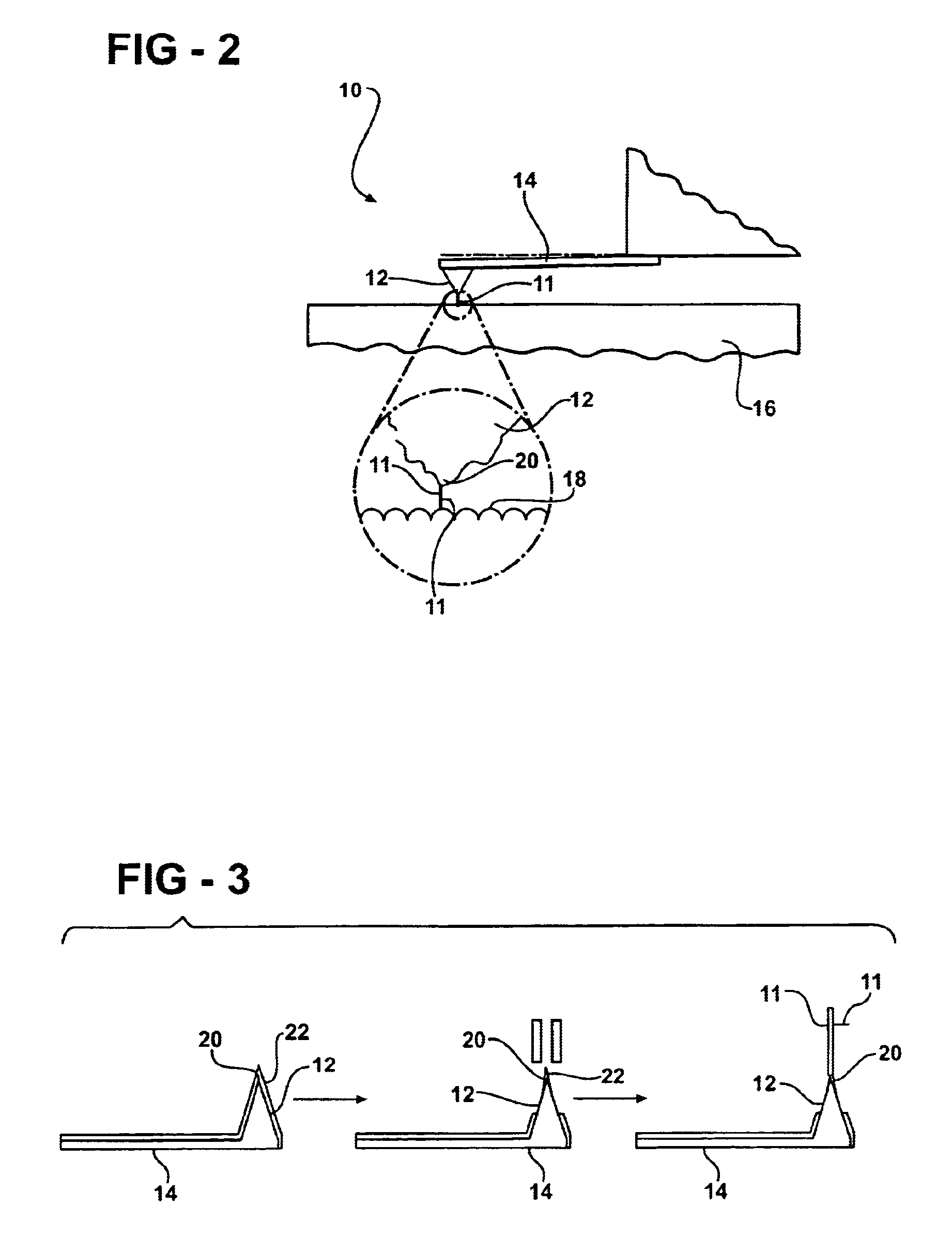Method of producing a branched carbon nanotube for use with an atomic force microscope
a technology of branched carbon nanotubes and microscopes, which is applied in the direction of chemically reactive gases, solid-state diffusion coatings, chemical vapor deposition coatings, etc., can solve problems such as inadequacies, and achieve the effects of superior material properties, increased stability, and extreme mechanical strength
- Summary
- Abstract
- Description
- Claims
- Application Information
AI Technical Summary
Benefits of technology
Problems solved by technology
Method used
Image
Examples
Embodiment Construction
Referring to the Figures, wherein like numerals indicate like or corresponding parts throughout the several views, a method for producing a branched carbon nanotube (CNT) 11 is disclosed. The branched CNT 11 produced according to the method of the subject invention includes a primary branch, a secondary branch, and optionally, a tertiary branch. These branches are described below. By use of the terminology branch, it is to be understood that there is no requirement that the secondary branch extend perpendicular to the primary branch. Instead, the branches can be more integral to one another where the branched CNT 11 appears more like a curve than an L- or T-shape.
The branched CNT 11 is for use with an atomic force microscope (AFM) 10 as shown generally in FIG. 2. However, the branched CNT 11 may also be used on other devices for manipulating nanoparticles. The AFM 10 includes a cantilever 14 having a tip 12 that may, or may not, culminate with an apex 20. For example, in FIGS. 1-8 t...
PUM
| Property | Measurement | Unit |
|---|---|---|
| temperatures | aaaaa | aaaaa |
| atomic force microscope | aaaaa | aaaaa |
| electrical field | aaaaa | aaaaa |
Abstract
Description
Claims
Application Information
 Login to View More
Login to View More - R&D
- Intellectual Property
- Life Sciences
- Materials
- Tech Scout
- Unparalleled Data Quality
- Higher Quality Content
- 60% Fewer Hallucinations
Browse by: Latest US Patents, China's latest patents, Technical Efficacy Thesaurus, Application Domain, Technology Topic, Popular Technical Reports.
© 2025 PatSnap. All rights reserved.Legal|Privacy policy|Modern Slavery Act Transparency Statement|Sitemap|About US| Contact US: help@patsnap.com



